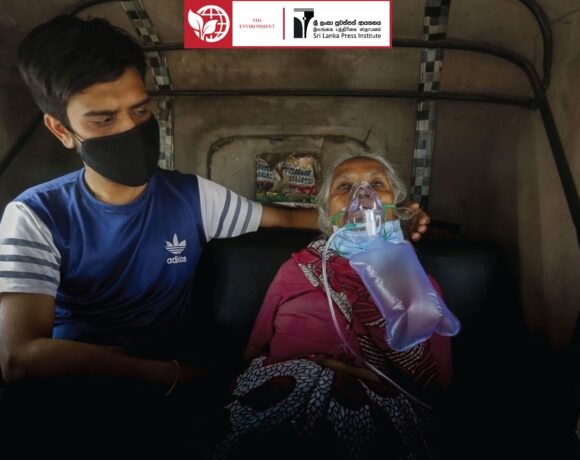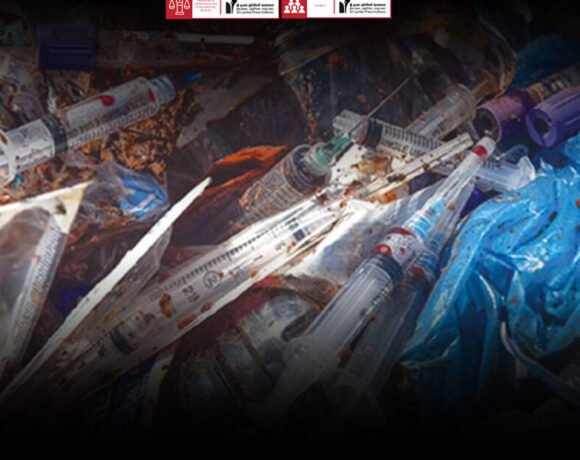
Deforestation, Government and Circulars
Aruna Lakshman Fernando
Environmental damage became the top priority in local news in Sri Lanka, surpassing the skyrocketing cost of living and the pandemic. The government is directly blamed for the environmental damages. The allegations have become such a burden that government Ministers and MPs lament even in funeral orations that the government is not involved in deforestation. However, Minister of Environment Mahinda Amaraweera admitted at a press conference held on April 24th that there had been damage to the environment.
Meanwhile, State Minister of Wildlife Wimalaweera Dissanayaka was embarrassed by a Buddhist monk at a ceremony held in Hambantota to mark International Forest Day. Disturbing the Minister, who was boasting about the government’s policy of protecting the environment, the Buddhist monk pointed towards nearby banana cultivation and clarified that it was a wildlife reserve sometime back.
Deforestation is not random. The present government immediately withdrew the legal barriers against clearing forests as soon as they came to power by abolishing the 5/2001 circular under which 694,100 forest lands had been subjected to the control of forest conservation. With the abolition of the circular, these lands came under the purview of the Divisional Secretaries, and the political authorities and parties blessed by them could grab land covering for development.
The dialogue with the village programme of the President aimed at resolving issues like disputes related to state land and giving the right for cultivation to the farmers who have cultivated the forest reserves was misused unscrupulously. Provincial politicians misled even the President and grabbed land not only in forest reserves but also in wildlife parks.
In the recent past, the most aggressive land grabbing was when political cronies disguised as farmers and holding land in Dahaiyagala wildlife park and the elephant pass there. The event that led to this result was President Gotabaya Rajapaksa verbally advising wildlife officials to withdraw the cases against farmers who cultivate illegally on state land at the dialogue with the village held near the Kukulkatuwa tank in Thanamalwila. Before 24 hours passed, regional politicians and their associates entered the Dahaiyagala wildlife park, cleared forest land, and divided the land. Wildlife officers became helpless onlookers as a result of the President’s verbal order.
Usually, the personal rights of land are overridden when a wildlife reserve or any other state land is declared. The owners of the lands within a 100meter radius from the reserve border cannot develop their private lands without the authorities’ permission. Destruction in Dahaiyagala reserve is phenomenal due to the blatant violation of all these regulations.
Dahaiiyagala is the northern border of Udawalawe Wildlife Park. The area is a unique pass for elephants that live in Lunugamvehera, Yala and Kumana wildlife reserves. The elephants move from Lunugamvehera alongside the border of Wetahirakanda mountain roam into the Bogahawatta proposed wildlife park via Dahaiyagala’s elephant pass. The pass is used by elephants in the Samanalaweva forest reserve and extra sensitive Soragune environmental zone in Haldummulla in Badulla district also. A natural saltern is located in Karametiya in the proposed Bogahapitiya wildlife park, and the elephants from Udawalawa and Lunugamvehera come to eat salt mixed soil there and also use this pass very often.
Grabbing land in elephant passes and commencing human activities there are not limited to Dahaiyagala. Two hotels are being built across the Bovitiyathenna elephant pass in Manikkawatta. This pass is used by two elephant herds that live in the Sinharaja rain forest. The controversial exposure of this by Bhagya Aberathna in a popular television programme was related to this construction. Although this area was an elephant pass for a long time, wildlife and forest conservation authorities have not declared it a reserve as yet. The parties who are building these hotels manipulate this loophole in the law.
Environmentalist Sajeewa Chamikara says that the gazette notification dated 1993/6/24 and numbered 772/22 issued under 1980/47 National Environmental Act highlights the requirement of an environmental impact assessment in terms of developing a land of more than one hectare. The destruction of the Sinharaja rain forest is not limited to this incident. Massive destruction is being undertaken in the Rosemary Division of Pannila forest in Rakwana and Delgoda reserves in Kalawana Pradeshiya Sabha area as well.
The most controversial news regarding Sinharaja is the attempt of the government to build two tanks within the UNESCO-declared World Heritage Rainforest to divert water to the Hambantota district. Due to resistance from people, Minister of Irrigation Chamal Rajapaksa eventually said that it was only a proposal. Such a proposal also proves the Uma Oya project’s failure that aimed at providing water to the Hambantota District. These two reservoirs are to be constructed in the Madugate and Ampanagala areas. They were initially considered under the Rivers Gin and Nilwala development schemes, and plans were dropped due to the understanding of failures, as the residents of those areas say. The aim of these water schemes is not to irrigate the farmers’ lands but to provide water to the 15,000-acre Chinese Industrial Zone, as argued by the environmentalists. They also say that the Lankagama-Deniyaya road was constructed ignoring the resistance in order to develop infrastructure for these projects. However, the UNESCO Sri Lanka office announced on 25/3/21 that the Sri Lanka government had agreed to drop this plan.
Further, 5,000 acres of the Watawalakandiya Forest Reserve in Mahaoya is slated to be leased out by the Mahaweli Authority for a mass scale crop cultivation. The soil rackets that occur island-wide is another serious environmental issue. These racketeers are so powerful that they even ignored a court order regarding soil cutting in Deraniyagala.
The situation in the southern part of the island is this. However, the Tamil National Alliance, recently involved in an attempt to destroy a 1,500-acre forest land in the Eastern Province for government purposes, prevented it.
காடழிப்பு, அரசாங்கம் மற்றும் சுற்றறிக்கைகள்
කැලෑ කැපිල්ල ආණ්ඩුව සහ චක්රලේඛ







